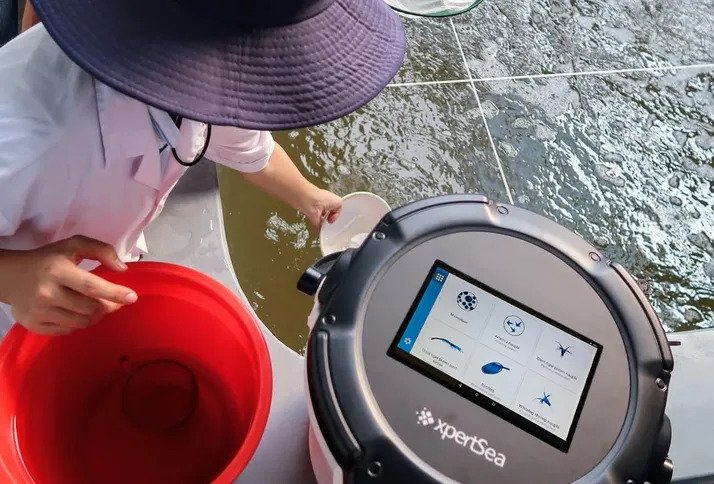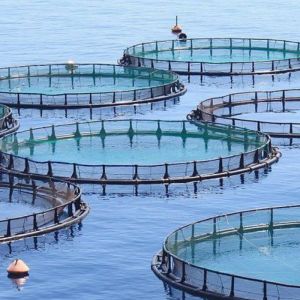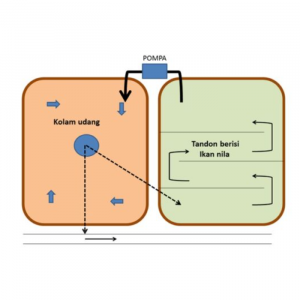
A Practical Guide to Using AI in Aquaculture
| Thu, 30 Jan 2020 - 09:54
Artificial intelligence (AI) is already making huge improvements to the efficiency and sustainability of global aquaculture, as this practical guide to some of the best systems currently available shows.
Artificial intelligence – machines that constantly learn. We’re not talking about monosyllabic Arnie-Esque Terminators nor Matrix-style floating robot squids – just the emerging apps and programs which make living in 2020 easier.

XpertSea's XperCount uses cameras and machine learning applied to computer vision to count, size, weight and image shrimp in seconds
Things have changed drastically since 2010 and AI is already a part of the daily lives of millions of people. No need to drive to the big city to pick up that book or tool you’ve been drooling over – just a few clicks and it’ll be delivered to your doorstep. You can avoid the indignity of asking for driving directions because of the magic of Waze and Google Maps. Even the ads that pop-up, when you’re scrolling through social media, are customized.
By providing a variety of services AI has become a potent tool in strengthening various industries – especially aquaculture.
Reducing waste feed
Feeding represents the biggest cost to fish farmers, so optimization in this area always means better profitability. But feeding strategies are often arbitrary and dependent on people who constantly watch how much the farmed stocks are gobbling up. Pellet dispersal is based on observation or, very often, intuition.
Fine-tuning feeding regimes are crucial because stocks fed too little lose valuable weight while overfeeding wastes money and pollutes local waterways. The skill of gauging when and how much to feed takes years to develop. To gain knowledge and experience, farmers remain on site every day (weekends and holidays included) for months – spending more time at work than with their families. And not every farmhand is a fish-feeding expert. But what if human skills and knowledge could be passed on to machines?

The constantly learning AI of Observe Technologies gauges why feed pellets remain uneaten past a certain point, helping farmers manually or automatically adjust how much to feed, minimizing waste and maximizing profit. © Observe Technologies
A company called Observe Technologies offer a plug-and-play AI and data-processing system to track measurable patterns when stocks are feeding. Their goal is to provide farmers' empirical and objective guidance on how much to feed.
Another player, called eFishery, has developed a system which uses sensors to detect hunger levels in shrimp and fish, controlling dispensers which release the right amounts of food; the company claims this can reduce feed costs by up to 21 percent.
Elsewhere, Japanese and Singaporean aquaculture technology firm Umitron Cell offers a smart fish feeder that can be controlled remotely. “Farmers are given data-driven decision-making advice to optimize feeding schedules. This reduces waste, improves both profitability and sustainability while offering users a better work-life balance by eliminating the need to be out in the water in dangerous conditions,” notes Umitron product manager Andy Davison.
These systems consider weather events like storms or the sapping glare of hot summer months, helping farmers produce more seafood with fewer resources, ultimately increasing profits significantly.
Preventing diseases and tracking prices
Diseases are the next big cost driver and something AI can readily address. Programs can predict disease outbreaks before they happen by annotating collected data, presenting it and applying preventive measures.
In April 2017, Norway’s Seafood Innovation Cluster launched the AquaCloud platform, a cloud-based program which aims to help fish-health managers and researchers deal with sea lice, predicting or even preventing lice development in sea cages with the goal of reducing dependency on expensive medical treatments, thus minimizing stock mortality.
Indian aquaculture technology start-up Aquaconnect offers FarmMOJO, a mobile application that helps shrimp farmers predict diseases and enhance water quality. “Smart technology is the key to better productivity and disease management,” says Aquaconnect CEO, Raj Somasundaram.
Sensor-equipped drones and robots can also collect data such as water pH, salinity, dissolved oxygen levels, turbidity, pollutants and even the heart rates of stock – all accessible via a smartphone. One of the most innovative is SHOAL, which uses robot fish to detect underwater pollution sources near fish farms and other facilities.
Through AI, farmers can remotely switch pumps, motors, aerators or diffusers on or off. Production and demand can be forecasted by altering program parameters, further improving farm efficiency and monitoring ability.
Even optimizing economics during harvesting, which most farmers gauge based on educated guesswork, can be dictated by machines. XpertSeauses computer vision and AI to calculate the growth of shrimp, helping farmers predict the most profitable harvest periods. Advanced AI techniques like deep learning are used to pinpoint timeframes by continuously using machine learning on historical growth cycle data.
“The company’s Growth Platform provides online management software that uses artificial intelligence to capture, ingest, store and process field data to give farmers and industry experts actionable, data-driven insights throughout the whole production cycle,” explains Valérie Robitaille, CEO of XpertSea. “This platform is used by farmers but also feed, health, genetics, and certification enterprises to provide data-driven services to farmers. The second part of our solution is the XperCount that collects critical animal data by using cameras and machine learning which is applied to count, size and weigh animals in seconds.”
Through this dual solution, farmers are able to track the growth of their crops, feeding regimes and up to 20 water parameters. Very handily, the system can also predict shrimp growth 14 days in advance, based on existing data. The company goes even further by combining this shrimp growth data with market prices, making it much easier for farmers to make the right decisions.
Over 600 farmers and other customers have already embraced digital solutions from XpertSea. The company is proud to report that in the past year alone, the platform has processed over 2.3 billion animal data points and optimized the performance of 6,000 crops.
Conclusions
Though great strides in mechanized aquaculture are being made, full automation is still a long way off. We probably won’t see fish farms that can manage entirely without the sure hands of humans any time soon. But fully embracing and investing in AI plus automation can significantly produce more seafood to feed the growing world population, while reducing the cost and environmental footprint of aquaculture operations.
Done right, AI means fish farmers can earn more and finally have more time to spend with their families. Are you in favor? Then just say AI.
Source: The Fish Site






















